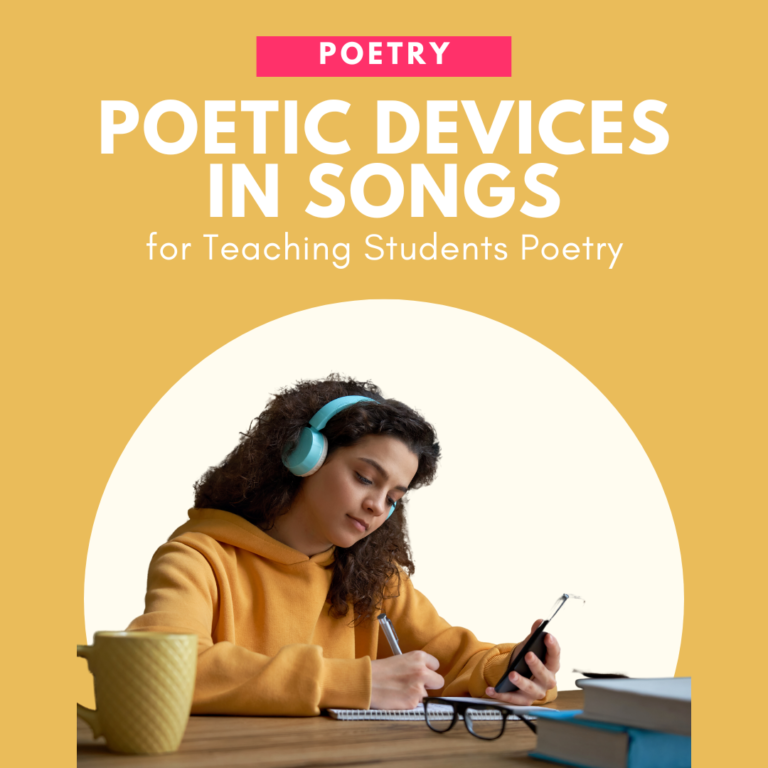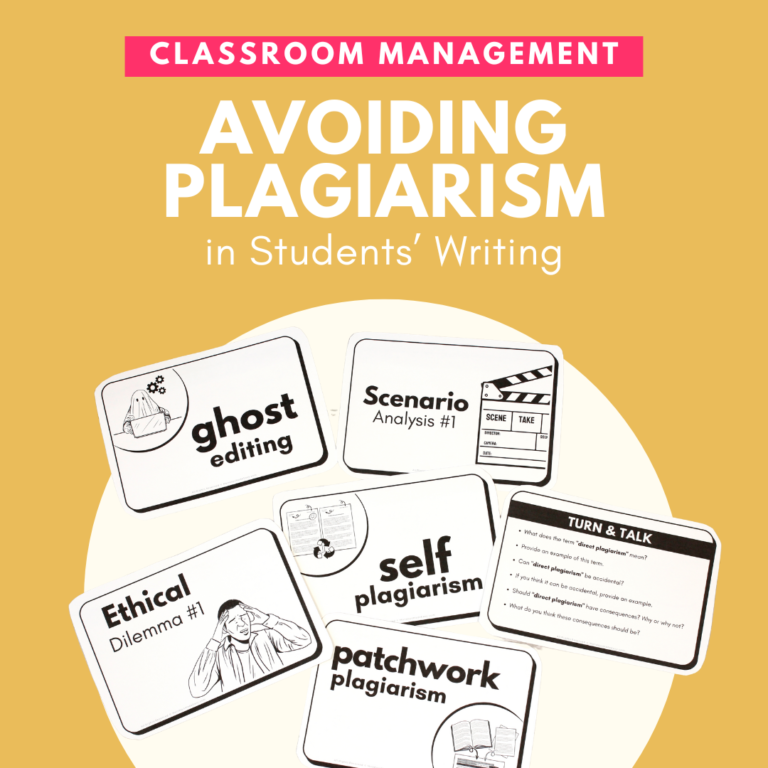Creative writing is an important part of any English Language Arts curriculum. This is because creative writing teaches students to be better writers. It also helps students develop a deep appreciation for professional writing – this is especially useful for students writing the AP Language and Composition exam. There are several opportunities to teach creative writing if your students are enrolled in a creative writing course. The same is true if they are simply learning standardized literacy skills. This blog post will share creative writing prompts and creative writing activities that both you and your students will love.

What is Creative Writing?
There are four types of writing styles: expository, descriptive, narrative, and persuasive. Each style of writing serves different goals of the author. For example, the author’s goal with persuasive writing is to convince the audience of their point of view. By convincing their audience, they may be able to follow through with a desired action or promote changes in their community.
Narrative and descriptive writing styles can both fall under the category of creative writing. For narrative writing, the goal is often to tell a story – sometimes to illustrate a deeper meaning or a theme. For descriptive writing, authors are often trying to figuratively “paint a picture” in a reader’s mind. By creating or recreating an image, the author can evoke the reader’s senses for a strong emotional and visceral response.
The goal of creative writing, in general, is more difficult to pinpoint; there are several reasons why an author may choose to write creatively. This could be to express their thoughts and emotions, to pay tribute to a loved one, to entertain their audience – the list goes on.
Since there is no definitive purpose for creative writing, there is also no definitive form. Creative writing can include narrative essays, poetry, free verse writing, novels, speeches, cinema scripts, and more. There are several different types of creative writing, and in some cases, very few rules – some forms of creative writing do not even abide by standard rules of grammar and mechanics. For those who teach creative writing, exploring these diverse forms allows students to experiment and find their unique voice in the craft.
What is Taught in Creative Writing?
Given that creative writing is so different from other forms of writing taught in school, you might be wondering what would be taught in a creative writing course. If you consult your district’s curriculum, you may not find any explicit direction to teach creative writing in school. (Unless you live in British Columbia – the BC Curriculum has a course outline for creative writing).
What most curriculums do contain is the requirement to explore narrative and descriptive writing. For example, the Common Core requires students to “write narratives to develop real or imagined experiences,” and to “use narrative techniques, such as dialogue, pacing, description, reflection, and multiple plot lines, to develop experiences, events, and/or characters.”
Similarly, the Ontario Curriculum for Secondary English requires students to “write for different purposes and audiences using several different literary, informational, and graphic forms.” These requirements invite teachers to explore narrative and descriptive writing with their students. However, these requirements are quite open-ended.
Most creative writing courses teach students where to find inspiration. Teachers also offer several creative writing prompts to practice creative writing. Students will study the works of famous authors to model their descriptive and narrative techniques. They might also share their work and offer feedback and revisions to their peers. Finally, teachers will also coach students to overcome writer’s block.
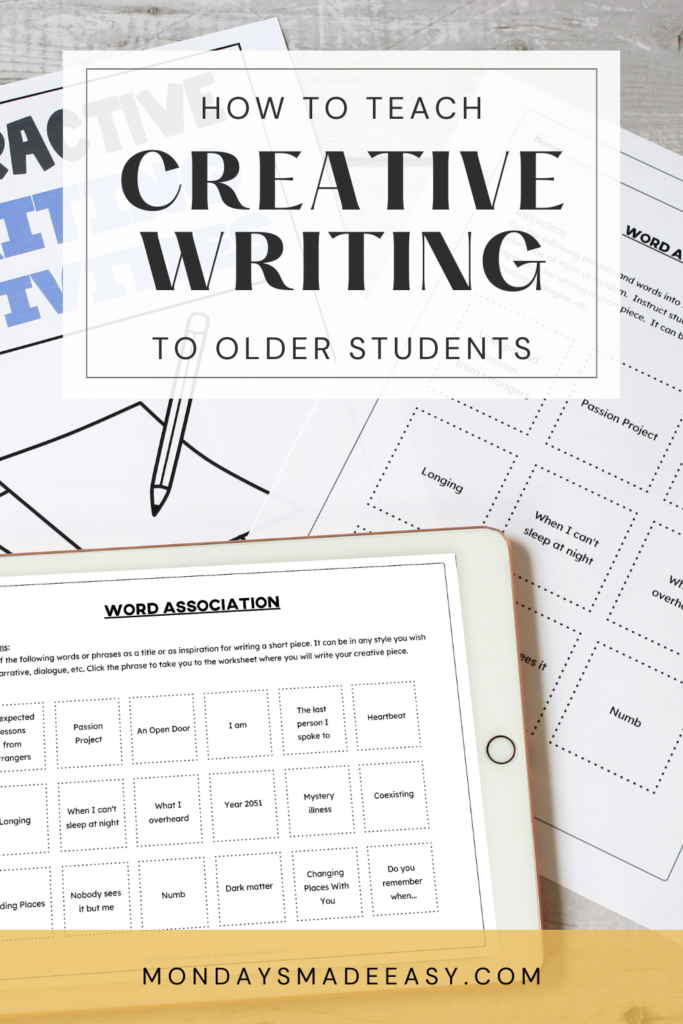
How do you Teach Creative Writing?
Here are some prompts and activities to teach creative writing that you can add to your curriculum. These activities are suitable for your standard English Language Arts curriculum as well. All of these activities are included in Mondays Made Easy’s Creative Writing Unit.
You can begin your unit by introducing students to a writer’s manual, like Ray Bradbury’s Zen in the Art of Writing. This text explores Bradbury’s thoughts on creativity, authenticity, and the writing process. Students can apply his technique for harnessing inspiration and nurturing developing ideas. Mondays Made Easy offers daily bell ringers and a chapter-by-chapter study guide to facilitate reading this text and can be used if you teach creative writing in class.
In addition to writer’s manuals, there are several rules of writing offered by noteworthy authors. Have students explore Kurt Vonnegut’s 8 Basic Rules of Creative Writing, Roxane Gay’s Top 13 Writing Tips, or Stephen King’s Top 20 Rules for Writers. Students can create posters, anchor charts, or bookmarks featuring these rules for writing.
What are the Best Writing Prompts for Creative Writing?
As Bradbury explains in Zen in the Art of Writing, the best prompts are the ones that already exist inside of us. In order to access these, your students can complete the following writing prompt activity:
Have students devote a notebook to write down random phrases or words that pop into their heads. You can start this activity by devoting 5-10 minutes to silent brainstorming. Once students have completed this activity, they can continue to build their list. The more they practice this, the more they’ll notice the appeal of phrases and words they come across throughout their day – in their conversations, in their minds, and overheard from others. I like to challenge my students to come up with a list of 50-75 phrases and words.
These phrases and words then become the inspiration for their creative writing piece. They can use it as a title for a poem, a concept for a narrative essay, or a starting point for creative dialogue. This activity helps teach creative writing by encouraging students to tap into their own creativity and generate unique ideas.
Your students have a hard time generating a list of words and phrases. If so, you can model this creative process or brainstorm some prompts as a class. Mondays Made Easy also offers a FREE Writing Prompt Activity with over 30 writing prompts to use as adventure titles, story starters, and more. This resource includes ready-to-print activities and a digital choice board formatted for Google Drive®. This activity can be particularly helpful when you teach creative writing and want to inspire students to generate their own unique ideas.
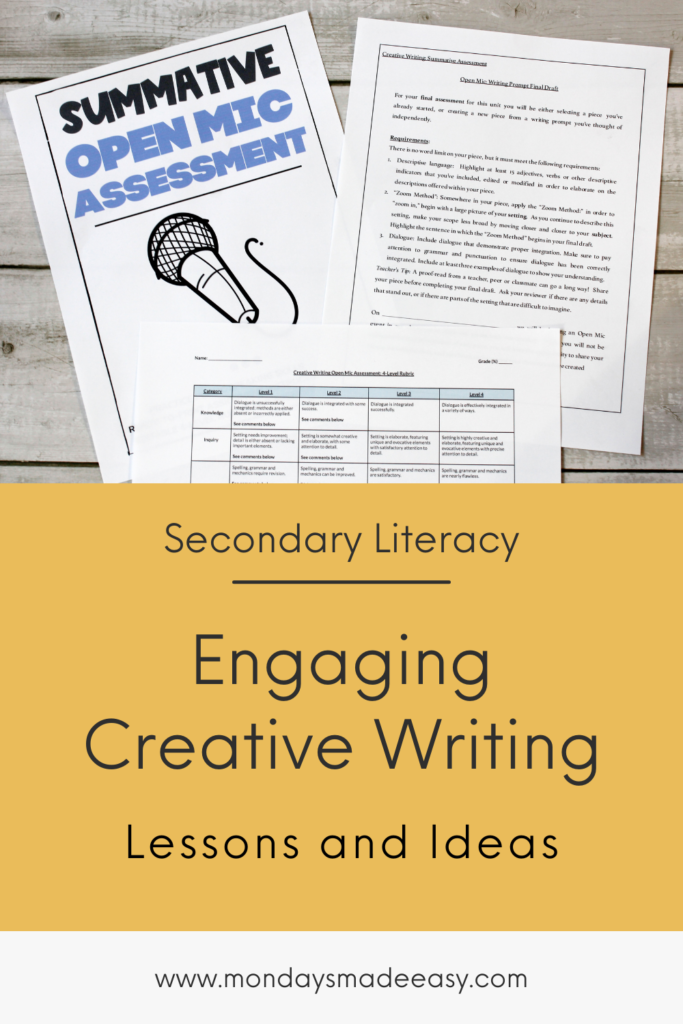
What Skills do Creative Writers Need?
Your students will need to be able to develop and nurture ideas when you teach creative writing. As mentioned above, there are several writing prompts and activities that you can use to overcome writer’s block.
In addition to this, students will need to know how to write descriptively. Descriptive writing can be challenging, but it is quite easy to scaffold. To do this, you can incorporate writing strategies like the “zoom method“ or use guided writing prompts.
Students should also understand the grammar rules for dialogue. While grammar rules are not always necessary in creative prose, your students will certainly need to know how to integrate dialogue into narrative writing. This is a great skill to teach creative writing because it translates to other forms of writing, including literary analysis. By mastering dialogue and descriptive techniques, students can strengthen both their creative and academic writing.
What are Good Creative Writing Topics?
You might find that the best way to teach creative writing topics to your students is by including student choice. There will be no “best” topic for every student because every student of yours has different interests and experiences. It is also important to consider our students’ cultural backgrounds. Certain creative writing topics may appeal to some of our students, but not all.
For this reason, I love to introduce creative writing choice boards to my students. I will include prompts that engage with diverse interests and skillsets, and feature topics such as sports, fame, space exploration, nature, and art. This approach helps teach creative writing by accommodating varied interests and backgrounds.
Another way to implement choice into creative writing topics is to use creative writing story starters. You can include general sentences that students can use to start a story. With a wide-reaching story starter, students are free to creatively roam. They will essentially develop their own creative writing topic from the starter you provide.
Similarly, you can implement choice by facilitating an activity called “adventure titles.” Instead of providing students with a sentence to start their story, you provide them simply with the title. Mondays Made Easy offers FREE creative writing worksheets to facilitate this activity with your students, making it a flexible tool when you teach creative writing and want to encourage student creativity.
How do you Teach Creative Writing Creatively?
There are so many games and activities that can be used to teach creative writing and make it fun. Some of them require no materials at all! All that you need is a group of students who are willing to take risks and not overthink their responses. I spend a lot of time emphasizing to students that the creative process is all about letting go and accessing their subconscious. Ray Bradbury’s Zen in the Art of Writing does a great job of teaching this very same lesson.
If your students are having a hard time opening up, some icebreaker activities might be a great idea. Check out Mondays Made Easy’s blog post for 8 icebreaker ideas to use with older students. My favorite one to promote discussion is this speed meeting game.
A class favorite for my students is snowball writing. You can facilitate this in your classroom as an oral activity by playing “fortunately, unfortunately.” Start this game by having a student volunteer with a statement that starts with “fortunately” or “unfortunately.” The next student will follow suit with a related statement that starts with the opposite word. Your students will definitely get a laugh out of this!
To facilitate a similar writing activity, start each student with a writing prompt. Students will write one sentence before passing their paper to the student behind or beside them. They will then add a sentence to the paper passed to them. You will have completed a full round of this game when students receive the writing prompt with which they started. Once they’ve completed a full round, students can volunteer to share the completed piece. This game is a great way to teach creative writing collaboratively, while incorporating every student’s work into an entertaining piece of writing.
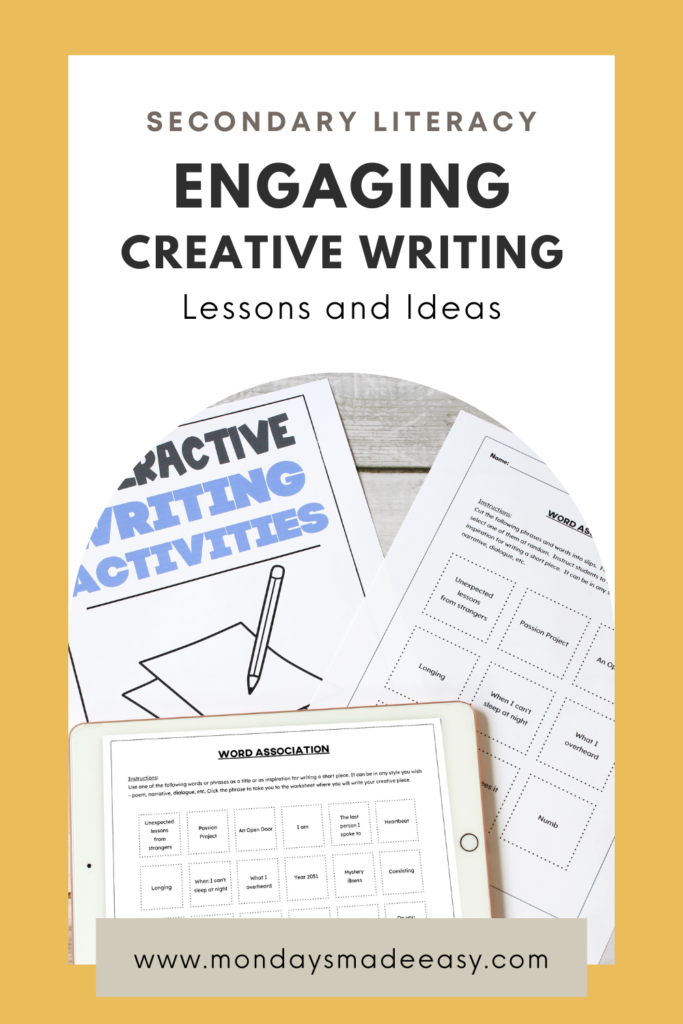
Fun Ways to Assess Creative Writing Skills
To add another layer to the snowball writing game mentioned above, you can turn it into a dialogue writing assessment. Simply provide students with a writing prompt that features a line of dialogue and have them continue the conversation. This activity serves as a great way to teach creative writing and helps peers model dialogue integration with each other.
Turning this game into an assessment is easy. Simply have students offer peer feedback by correcting any grammatical errors in the line of dialogue before theirs. This activity also allows you to formatively assess students’ dialogue integration. To facilitate this activity and to teach creative writing effectively, you can use the grammar worksheets and writing prompts included in Mondays Made Easy’s Dialogue Mini-Lesson.
My favorite summative assessment for a creative writing unit is to host an Open Mic. To do this, have students select one piece from their writing portfolio to read to the class. By offering student choice, students can put their best work forward while avoiding the vulnerability of sharing personal writing. I like to introduce the idea of this summative assessment at the start of the unit. This builds excitement and anticipation. It also encourages students to develop work worth sharing. It also reminds them that at the end of the day, their writing can be kept private if they wish.
Mondays Made Easy offers an Open Mic Assessment and Rubric as a bonus file in the 3-Week Creative Writing Unit. You can preview the resources included in this bundle by clicking here.
Creative writing is a fun subject to teach because it allows you to teach outside the box. Although your district may not have a curriculum for creative writing, there are many ways to incorporate writer’s craft into provincial standards and the Common Core.
Mondays Made Easy’s 3-Week Creative Writing Unit incorporates many of the activities mentioned in this blog post, including grammar lessons, creative writing worksheets, and over 50 creative writing prompts. To preview this bundle, click here.


